Career Decisions: Getting Into Partnerships, A Seat At The Table, & Scaling
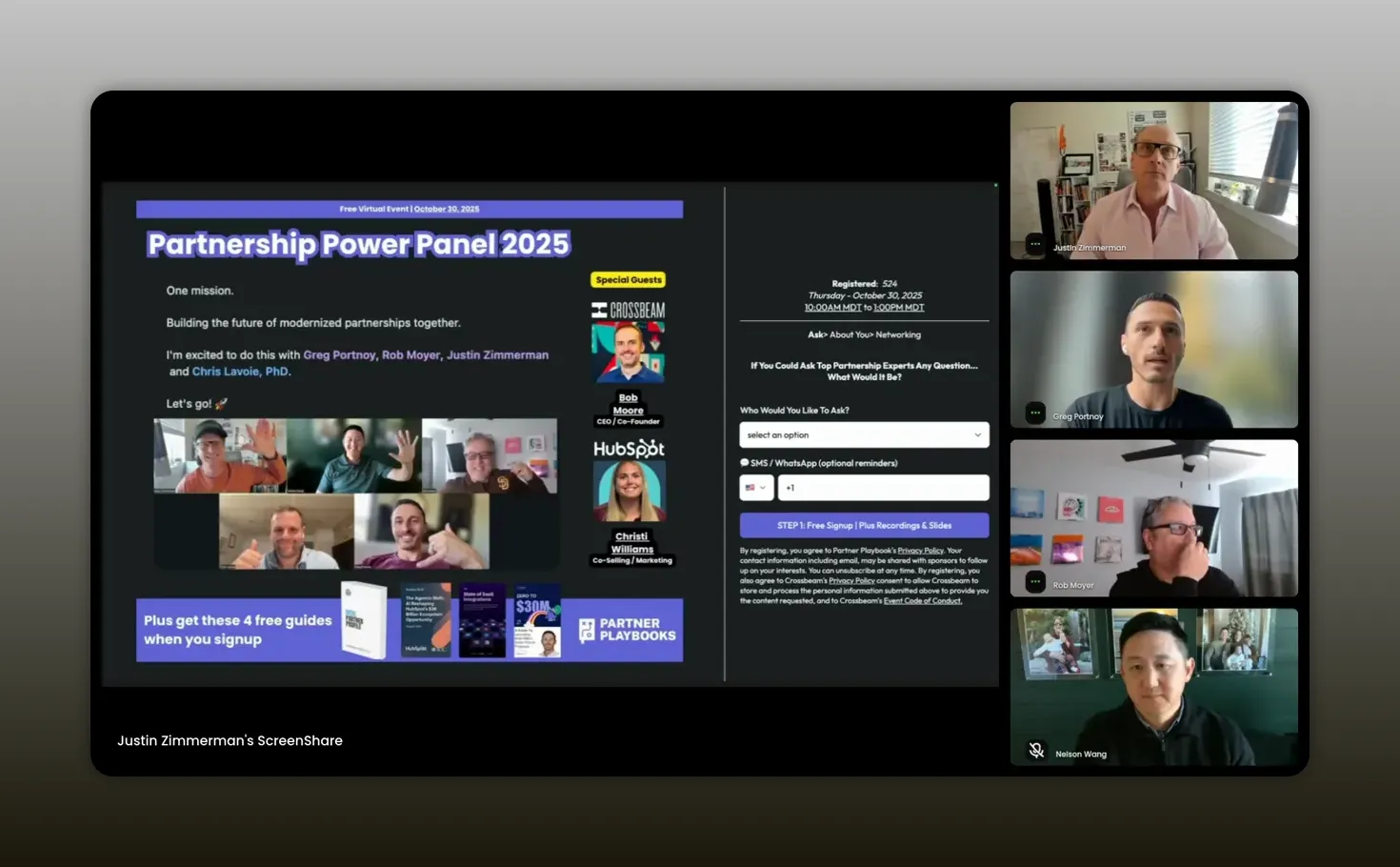
Featuring expert advice from Rob Moyer and Nelson Wang, Greg Portnoy, and Justin Zimmerman.
Introduction
You are operating at a turning point for partnerships: AI is accelerating what’s possible, but the biggest gains come from sharpening process, data and orchestration—not from chasing every new shiny tool. In a recent discussion with Rob, Nelson, and Greg, the conversation landed repeatedly on the same theme: successful partnerships behave like a business within a business. They require a CEO-level mindset, repeatable workflows, and modern tooling that amplifies human orchestration.
Table of Contents
- Why partnerships are the future of go‑to‑market
- How to break into emerging markets
- AI: the lever, not the magician
- Designing an orchestration-first operating model
- How to get into partnerships (career roadmap)
- Choosing AI-powered revenue platforms
- Resolving internal conflict between sales and partnerships
- Getting a seat at the table: metrics that matter
- Launching new channels and scaling without losing strategic depth
- Referral and reseller activation playbook
- GSIs and regional teams: a practical funnel approach
- Tools, screenshots and real examples
- FAQs
- Conclusion
Why partnerships are the future of go‑to‑market
Partnerships are no longer an afterthought or a single-person role. Rob, Nelson and Greg each described how partnerships at high-growth companies became a major revenue and strategic lever. Historically, sales and marketing received abundant tooling and investment. Partnership teams often worked off spreadsheets, tribal knowledge and ad-hoc processes. That’s changing.
Why now?
- Cloud ecosystems and integrations create natural adjacency where partners already solve the customer’s problems.
- Buyers expect specialist integrations and trusted implementers—partners deliver both.
- AI and modern PRMs (partner relationship management systems) bring the first realistic opportunity to operationalize partner data and attribution at scale.
Greg emphasized that partnerships can deliver outsized ROI because they unlock leverage: partners amplify distribution, provide domain expertise, and extend sales capacity when they are enabled and monetized correctly.
I built partner programs … generating between 25 and 65% of revenue after a couple of years for the entire business. – Greg
How to break into emerging markets
Expanding into new geographies sounds exciting, but it’s risky without a repeatable approach. Nelson and Rob distilled the evaluation into three practical lenses: customer, tech stack, and buyer persona.
- Start with the customer (ICP). Which segments and pain points match your product? Regional nuances change buying cycles and decision-makers. Map where your ICP lives and what local partners they already rely on.
- Attach to adjacent technology. In each region, identify local vendors, platforms, or integrators your product naturally plugs into. This reduces friction—partners prefer solutions that fit their existing tech stack.
- Target the buyer persona, not just the company type. Ask: who in the organization has the authority and budget to adopt your product? Startups need to find the buyer quickly; misaligned buyer targeting wastes months.
Practical playbook:
- Map ICP + buyer persona + regional tech stack for two target countries (don’t try to do too many at once).
- Identify 5–10 local partners who already sell into the buyer and whose services naturally extend to your product.
- Create a small pilot with those partners and instrument clear success metrics (pipeline, conversion lifts, deal size, retention).
- Iterate: double down on partner types that drive measurable outcomes, and sunset the rest.

Take a look at the tech stack… you just got to attach or integrate and get with them. – Rob
AI: the lever, not the magician
“AI will not help you if you do not have existing process and you do not have data,” Greg warned. It’s a blunt but necessary statement. AI amplifies scale and eliminates repetitive toil, but it cannot replace strategy or missing foundational data.
Key implications:
- AI is best used to automate and scale known workflows—partner onboarding, enablement content generation, automated status updates, triage for partner support.
- Before AI, build processes and collect structured data. If partner touches, influence, and outcomes aren’t being logged in a consistent way, AI won’t magically model them.
- Use AI to create order from cross‑system data (CRM, PRM, analytics) and to surface actionable insights: which partners are influencing deals, where partners are stuck, which enablement assets move win rates.
Examples of immediate AI wins
- Automated partner Q&A bots that answer common onboarding questions and route complex queries to humans.
- Smart monitoring of conversations and deal mentions (e.g., track marketplace mentions or integration keywords to surface partner opportunities).
- AI-generated partner enablement decks and co‑sell playbooks using templated prompts—reduces prep time from days to hours.
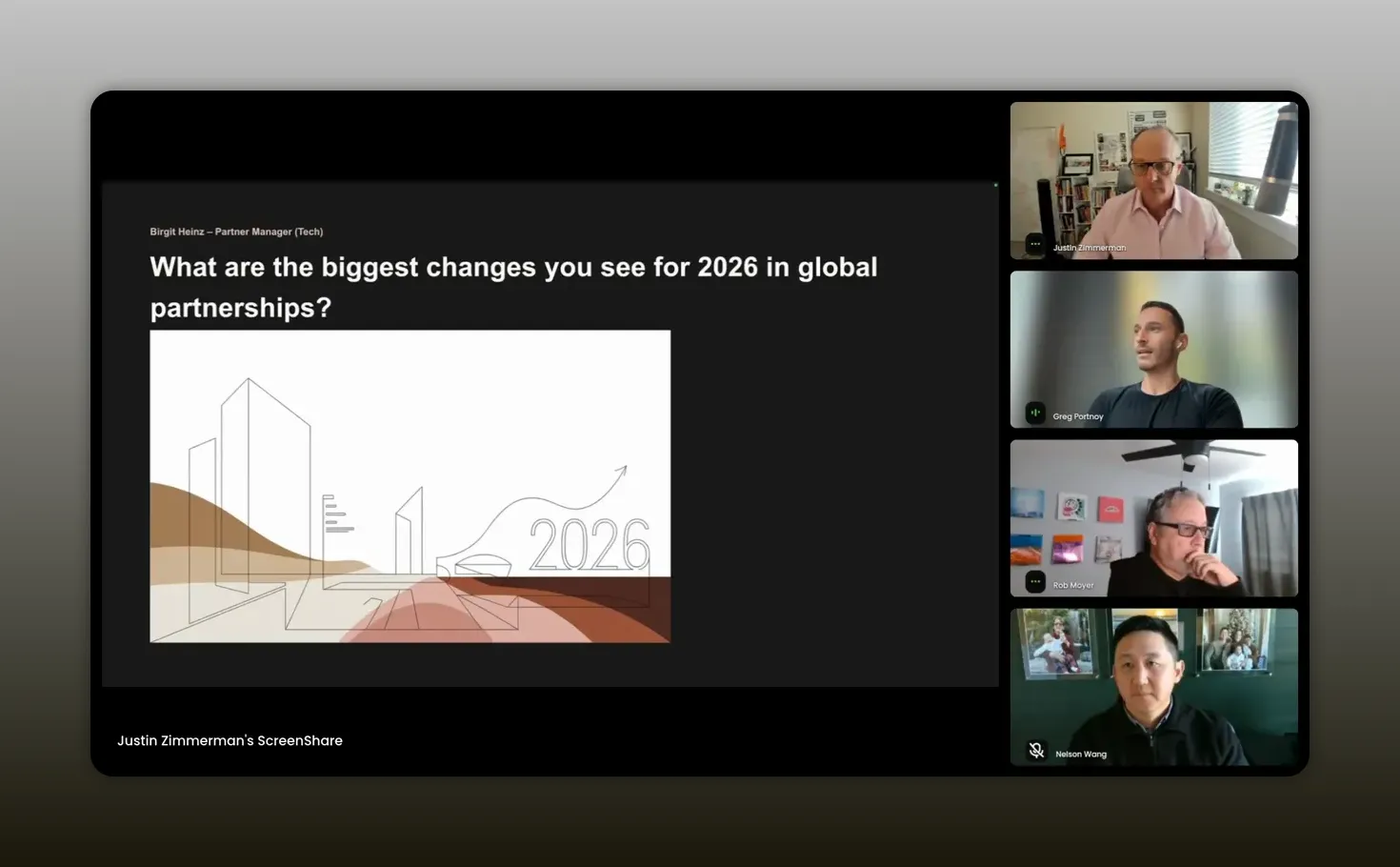
AI is a leverage tool. It creates leverage on existing processes… The only thing that can make sense of it all is AI. – Greg
Designing an orchestration-first operating model
Rob introduced the concept of the partner go‑to‑market engineer—someone who builds and orchestrates workflows across functions. Partnerships isn’t purely relationship management; it’s orchestration across sales, product, marketing, and services.
What does orchestration mean in practice?
- Define partner types and map a bespoke workflow for each (e.g., referral, reseller, systems integrator, technology partner).
- Document handoffs and responsibilities across functions (who owns partner enablement, who owns co‑sell motions, who owns renewal influence reporting).
- Automate the predictable parts: onboarding sequences, enablement cadences, partner scoring and health checks.
Orchestration checklist for first 90 days:
- Inventory partner types, contracts, and current processes.
- Create 3 canonical partner workflows (referral, co‑sell, integration) with owner, SLAs, and success metrics.
- Integrate PRM and CRM where possible to eliminate duplicate work and make attribution visible.
- Train a small set of internal ambassadors (sales, CSMs) on partner value props and rules of engagement.

You have to create like this orchestration mindset… partner source is gold, co-sell silver. – Rob
How to get into partnerships (career roadmap)
If you’re currently in sales, RevOps, product or CS and dream of moving into partnerships, the panel’s guidance was pragmatic and tactical.
Career moves that work
- Partner Ops to Partner Manager: Partner ops gives you workflow and data experience—an ideal transition.
- Sales to Partnerships: Show concrete examples of when you leveraged partners to close deals or scale outcomes. Demonstrable impact beats vague interest.
- Customer Success to Partnerships: CSMs who have driven referrals, reseller relationships, or joint renewal motions can transition smoothly.
Mindset shift: from reactive to CEO-style thinking
Nelson advised that the biggest differentiator is moving from being reactive (answering partner requests) to strategic (asking how a partner can scale into a long-term business). That means asking the partner: how do we turn this $50K outcome into a $10M services business? Presenting that level of thinking elevates you from operator to trusted advisor.
Steps to prepare
- Learn the basics: partner types, common commercial models (referral, reseller, joint-sale), and attribution terminologies.
- Practice writing partner playbooks and a 90-day partner pilot plan—even if hypothetical.
- Take a training or bootcamp (partner manager programs exist) to formalize your knowledge.
- Measure and present results: If you’re in Ops, create dashboards or short case studies that show how partners influenced outcomes.
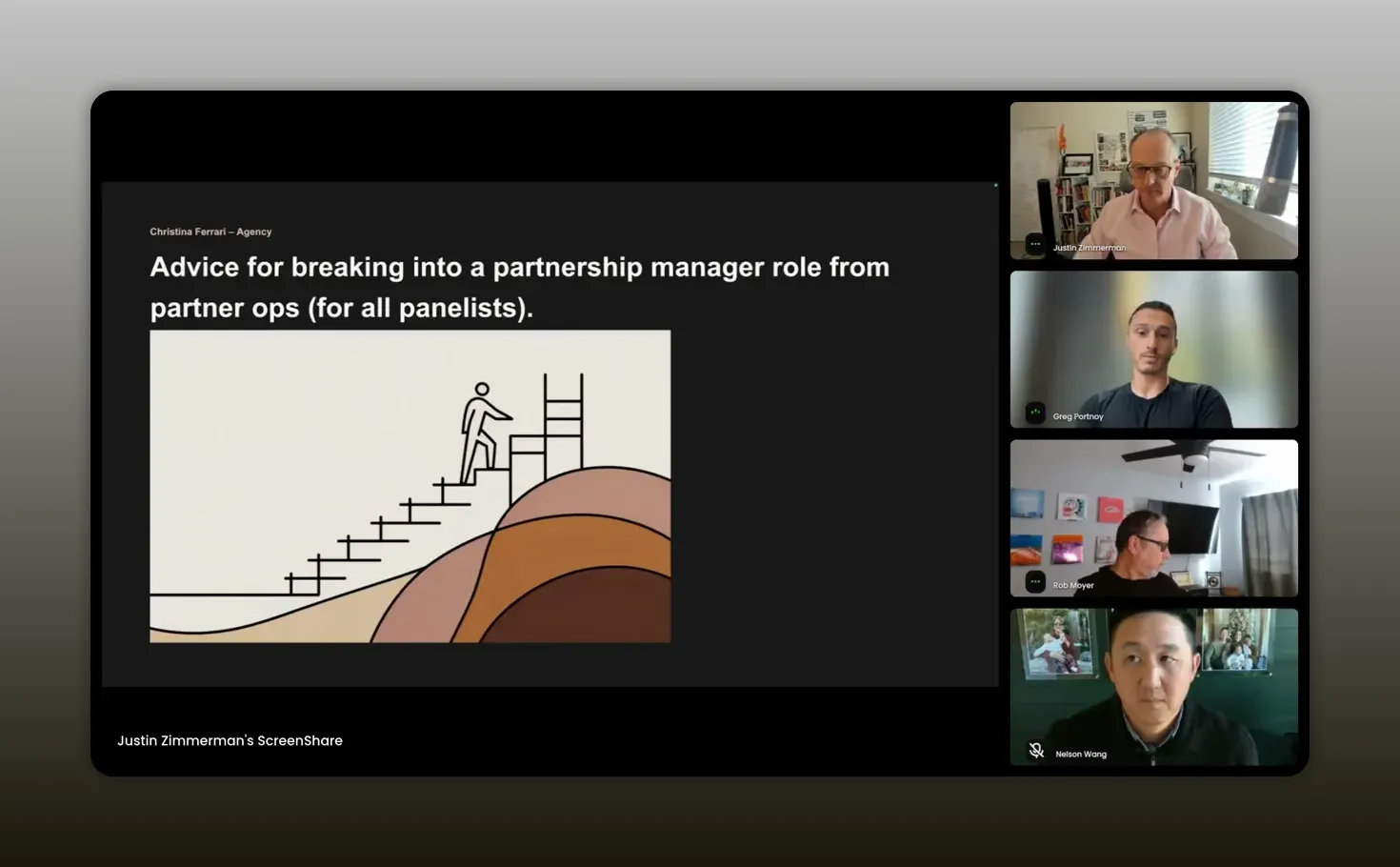
If you can figure that out… you’ll get much further than just saying, I want to do partnerships. – Greg
Choosing AI-powered revenue platforms
When selecting AI tools for partnerships, the single best question is: which tool solves your current, highest‑value problem? Don’t buy an end-to-end platform because it promises future features—buy what moves the needle today.
Three-step decision framework
- Identify your top 1–2 partner pain points (e.g., enablement, attribution, partner discovery).
- Map the tools that directly address those pain points and estimate time saved and revenue impact.
- Pilot with a small cross-functional team and measure adoption and impact before wider rollout.
Real examples from the panel:
- Gong: used to detect partner influence in deal conversations and to inform attribution.
- Gamma and Anthropic: used by Nelson to quickly build co‑sell decks and partner-facing presentations.
- Euler (a PRM): positioned as an orchestration layer that operationalizes partner workflows and uses AI to scale enablement.

Be a power user of whatever you have, and you’ll find great unlocks in the tools you’re using. – Rob
Resolving internal conflict between sales and partnerships
Conflict between sales and partner teams is common—and often rooted in poor strategy, not bad intent. Nelson’s core recommendation: adopt customer centricity as your north star.
Fix the strategy first
- Anchor every partnership motion to customer outcomes. If the partner helps the customer achieve a defined business outcome, it aligns naturally with sales.
- Map how partners impact the entire customer lifecycle (pipeline, onboarding, renewal, expansion) and communicate this transparently to sales and CSMs.
- Set rules of engagement and compensation neutrality where necessary to reduce gatekeeping and confusion.
Operational playbook to reduce infighting
- Create a cross-functional playbook for co‑sell deals with explicit roles and a simple decision tree: when does sales own the deal, when does partner own it, and how is credit assigned?
- Implement clear attribution checks (see “Seat at the table” below).
- Use small wins to build trust: find 2–3 deals where a partner clearly helped and run a short post-mortem to show the revenue impact.

If you solve for the blockers that are preventing them from getting to the major business outcomes… then you can find out which partners are the right ones to go solve for that. – Nelson
Getting a seat at the table: metrics that matter
Getting executive-level buy-in requires talking the C-suite language: conversion rates, average deal size, retention, and predictable pipeline impact.
Rob recommended two irrefutable metrics:
- Win rate by channel (partner-sourced vs direct vs influenced). Partners should significantly improve win rates compared to baseline direct sales metrics.
- Average deal size by channel. Partnerships should move average deal size up if the partner adds services or executive sponsorship.
How to operationalize attribution
- Define types: partner-sourced (originated lead), co‑sell (active joint engagement), influence (partner impact on deal outcome).
- Instrument triggers in CRM and PRM: when a partner participates, tag the deal with partner role and touchpoints.
- Use conversation intelligence (e.g., Gong) or activity tracking to surface where partners materially influenced decisions.
Deploy two short dashboards for executives:
- Program health: active partners, pipeline contribution, win rate by partner tier.
- Business impact: average deal size lift, retention differences, revenue influenced by partners.

Win rates… Direct sellers typically are stuck in this 13 to 15 percent win rate. Partnerships if you’re doing it right you’re in that 35 to 45 percent win rate. – Rob
Launching new channels and scaling without losing strategic depth
New channel launches are exciting but they carry the risk of tactical drift. The panel’s consistent advice: cast the vision, then repeat it—constantly.
Launch playbook
- Create a one-page channel strategy that answers: why this channel, target customer, partner archetype, commercial models, and 12‑month outcomes.
- Secure executive alignment on the strategy before you scale. Ask for the resources you need and the runway to build momentum.
- Run waves of activity (pilot, iterate, scale). Greg described “waves on the beach”: repeatedly return to the strategy and remind stakeholders why the channel exists.
- Instrument and measure: every channel should have a clear success metric (e.g., number of partner-enabled deals > $X or partner-driven renewals improved by Y%).
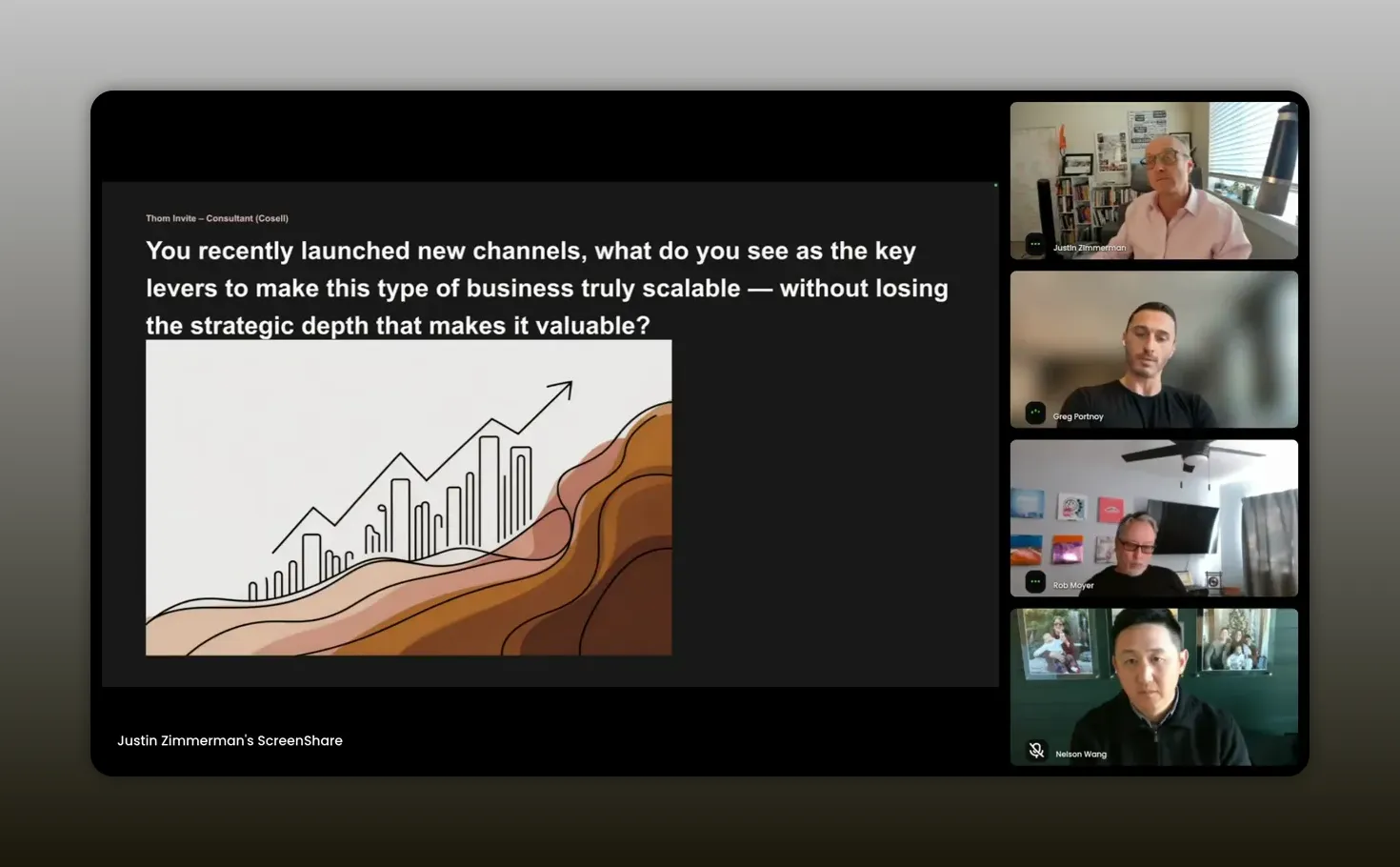
You have to have a plan going in… push very hard to have the conversation around why are we doing partnerships? – Greg
Referral and reseller activation playbook
Activating referral partners requires matching partner economic incentives to the value they deliver and making the act of referring as frictionless as possible.
Partner types and tactics:
- Customer advocates as referrers: embed referral asks into post-sale and onboarding moments. CSMs and AEs should request introductions while the customer is at peak satisfaction.
- Affiliate and content partners: attract thought leaders and SEO-driven content creators who can publish and send qualified traffic via tracked links.
- Service providers and integrators: make your platform core to their service offering and provide enablement, margins, and co‑marketing funds that make referrals attractive and repeatable.
Activation checklist
- Simplify referrals—short forms, tracked links, and incentives that align with partner business models.
- Create starter kits: one-pagers, co‑sell decks, and short demo videos that partners can use immediately.
- Run a “first 10 referrals” program: small prizes, visibility, and a dedicated manager who converts their first referrals quickly to build momentum.
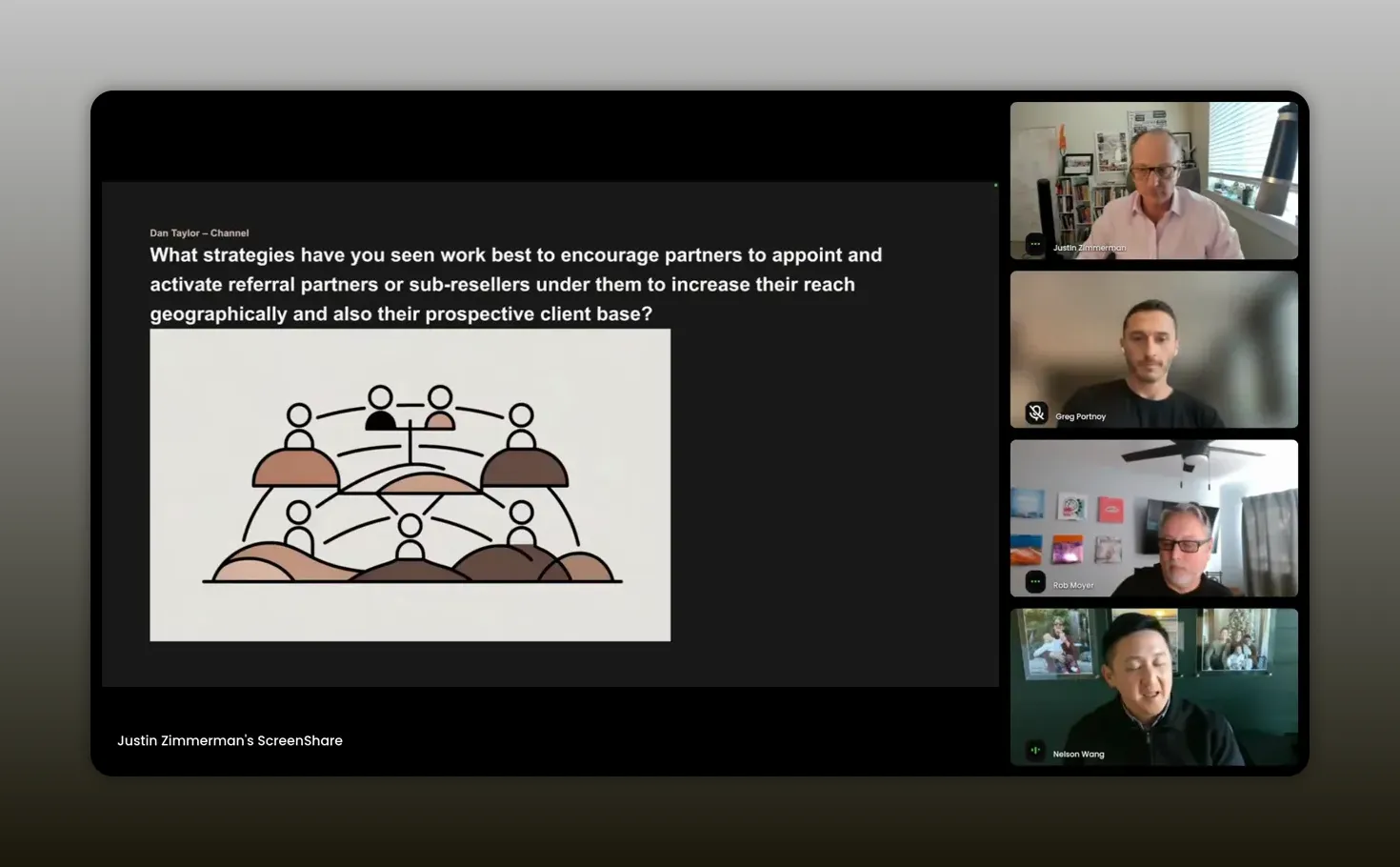
Find partners where your platform is core to the way they go to market and solve the problem today. – Nelson
GSIs and regional teams: a practical funnel approach
Working with GSIs (global systems integrators) can unlock large enterprise accounts—but it’s a long game. Rob cautioned that patience, focused outbound, and precise positioning are essential.
How to approach GSIs
- Pick a specific business transformation or capability where your product is differentiated and build a concise value proposition tailored to the GSI’s transformation practice.
- Outbound to the people inside the GSI who own transformation or specific practice areas, not to generic partnerships teams who may be protecting existing vendor relationships.
- Think funnel: fill top of funnel with many prospects, identify a middle funnel segment likely to invest in pilots, and then focus intensely on converting that middle funnel.
- Don’t ignore regional RSIs—sometimes local integrators or regional GSI practices move faster and are more willing to build a services practice around your product.
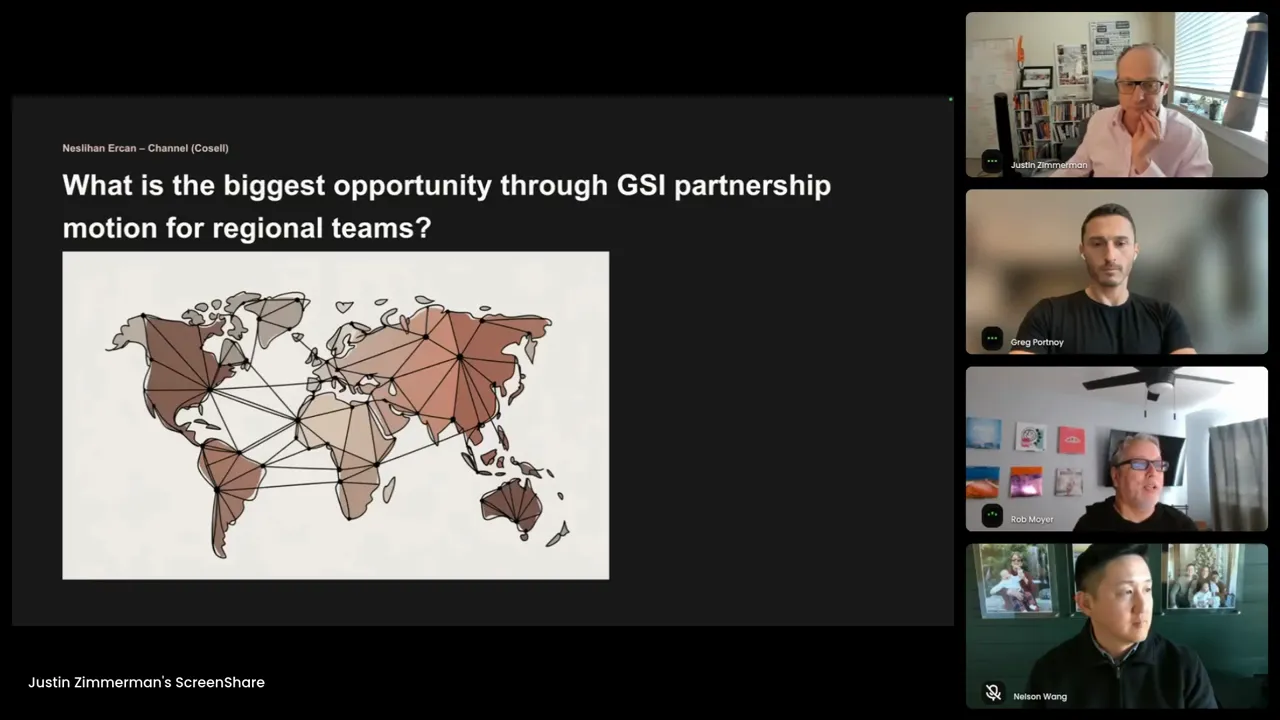
The money is not about the transaction. The money is about if they recommend you to their biggest customers. – Rob
Tools, screenshots and real examples
This section groups concrete tool examples and the types of workflows to instrument. Use the tools that solve your most painful problem first.
- Gong: use conversation analytics to detect partner influence and surface where partner interactions correlate with deals closing faster or at higher ARR.
- Gamma + Anthropic: accelerate co‑sell deck generation and tailored presentations for partners and prospects.
- Euler (PRM): use as an orchestration layer to manage partner lifecycle, automate enablement workflows and bring data together for attribution and AI-driven recommendations.

With Gong, they were able to say, you know what, actually here’s exactly where the partner influenced the deal. – Greg
FAQs
How do I get buy-in to build a partner program from scratch?
Begin with a tightly scoped pilot: define the target ICP, pick 3–5 partners that naturally reach that ICP, and set measurable success metrics (pipeline, win rate lift, deal size). Present the pilot with required resources, timeline, and expected ROI. Use early wins to secure executive buy-in and expand the program.
What metrics should I present to the C-suite to secure a seat at the table?
Focus on win rate by channel, average deal size by channel, pipeline contribution, and retention/renewal lift when partners are involved. Those metrics translate directly into revenue outcomes and are easy for executives to interpret.
Can AI replace partnership managers?
No. AI is a force multiplier for repeatable tasks—data aggregation, content generation, triage—but human-in-the-loop orchestration is still essential. Partnerships require relationship management, negotiation, strategic planning and cross-functional orchestration that AI cannot fully replace.
How do I choose the first tool to buy for partnership operations?
Identify your single biggest pain point (e.g., poor attribution, slow partner onboarding, ineffective enablement) and purchase the tool that directly addresses that need. Pilot it with a small group, measure impact, and then expand if it drives measurable ROI.
What is the fastest way to activate referral partners?
Embed the referral ask into your post-sale and onboarding processes, provide simple referral mechanics (links/forms), and give partners conversion-ready content. Pair that with short-term incentives and a dedicated conversion manager to convert early referrals into closed deals.
Should startups focus on GSIs or regional partners first?
Start with regional partners or small integrators who can move quickly and can build services around your product. GSIs are powerful but slow; pursue them after you’ve proven a repeatable services and reseller model in several regions.
Conclusion
Partnerships are transitioning from informal programs to disciplined go‑to‑market engines. The path to success is repeatable: define customer-centered strategy, design partner-type specific workflows, instrument data and attribution, and then use AI to scale the work you’ve already proven. As Rob, Nelson and Greg made clear, the true advantage is not the flashy tool—it’s the combination of CEO-level strategy, operational rigor, and the right tech that amplifies human orchestration. Start small, measure impact, and iterate. The results compound: better win rates, larger deals, and a sustainable channel that drives predictable revenue.